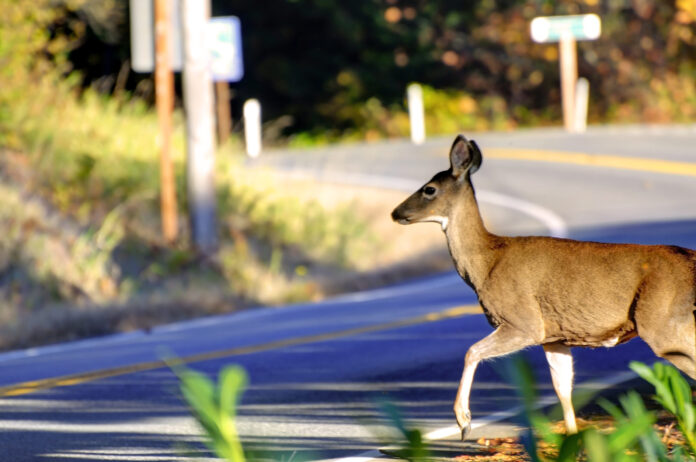Kootenay drivers are being urged to be on alert for animals when travelling on the roads this summer.
Trace Acres, Program Director for Road Safety at Work said that spring and summer are peak seasons for wildlife activity based on feeding and reproductive cycles. He said that the risk of wildlife collisions usually spikes during these months, particularly on rural highways.
“On rural highways where we know that there are wildlife present and we know by the signage that we see that there have been wildlife strikes in the past, so we really need to pay attention and be aware that wildlife could dart out in front of you anytime, anywhere.”
Wildlife tends to be the most active in the morning around dawn and then again just before sunset, which is when Acres said drivers should pay extra attention.
Collisions with deer often increase at this time of year, and with moose in June and July.
A male elk can weigh more than 300 kg (700 lbs) and a male moose can weigh up to 700 kg (1,500 lbs). Colliding with one at highway speeds is like hitting a brick wall, stated Acres, and it can do significant damage to the vehicle and to the people inside.
“These animals are bigger than we think. Deer tend to seem fairly small, but if you strike a deer at highway speed it can do significant damage to your vehicle and bring harm to the passengers inside the vehicle.”
Each year, an average of four people in the province are killed after being involved in a collision with wildlife and around 900 are injured.
Acres said over $40 million a year in claims made to ICBC are related to wildlife strikes, and that there are nearly 10,000 wildlife collisions each year.
Humans tend to fare better than animals do during a collision, with Acres saying that around 6,000 animals are killed annually in BC after being struck by a vehicle.
“Understanding the patterns of wildlife activity and adjusting driving habits accordingly is crucial for preventing these potentially fatal encounters.”
Steps to Help Prevent Wildlife Collisions
Acres said you can’t control what wildlife does, but you can take steps to reduce your risk of a collision by implementing the following practices:
- Remain alert during peak wildlife hours.
- Watch for animal crossing signs.
- Slow down when you see an animal on the side of the road. Others may be nearby.
- Pay attention to other drivers. Someone flashing their headlights may be signalling that they’ve seen an animal.
- Plan routes to avoid key wildlife areas during high-risk times or choose safer travel times.
It’s also good practice to warn other motorists of wildlife on or near the highway when you see one.
“If you have to stop because of an animal on the road, put on your four-way flashers to let other vehicles coming behind you know there is something in the road in front of you,” said Acres.
“If you pass a herd of animals at the side of the road, for the next kilometre just give your headlights a flash to again warn drivers that are coming by them that there are animals at the side of the road so they can slow down and pay attention.”
Be the first to know! Don’t miss out on breaking news and daily updates in your area. Sign up to MyKootenayNow News Alerts.


